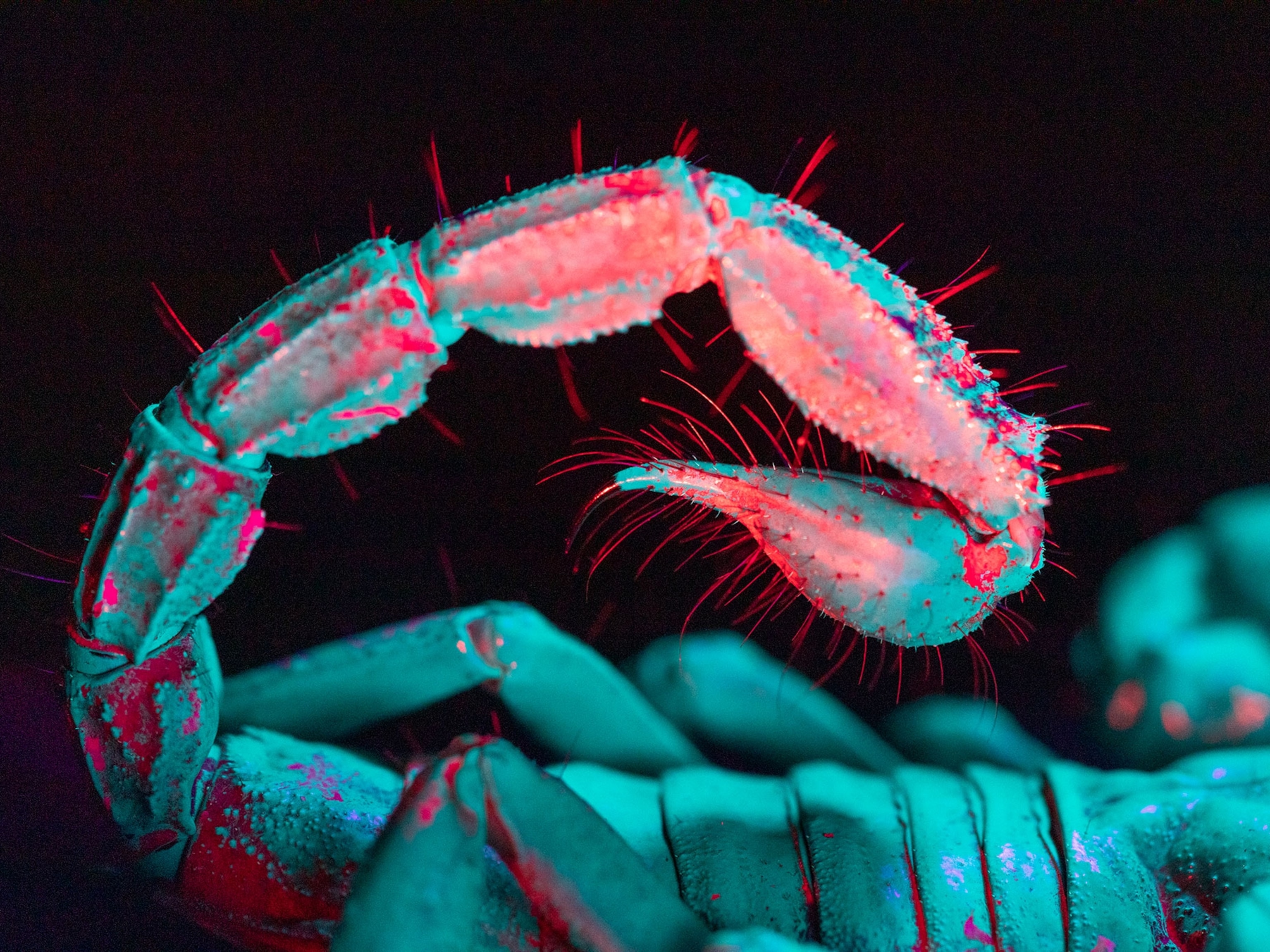
Grasshopper Mice Immune to Bark Scorpion Stings
Grasshopper mice feel no pain when stung by the venomous bark scorpion.
Feeling no pain? Freedom from hurting comes at the cost of getting stung for a desert-dwelling rodent called the southern grasshopper mouse.
It turns out that grasshopper mice (Onychomys torridus) are resistant to the painful, and potentially lethal, stings of one of their menu items—the Arizona bark scorpion (Centruroides sculpturatus).
These rodents may be small—ranging from 1.5 to 2 ounces (40 to 60 grams) in weight—but they're carnivorous, "howl" before they kill, and take care of scorpion stings with just a swipe of the tongue to soothe the injured area before eating their prey.
A new study published this week in the journal Science describes just how these curious mice neutralize the pain-producing toxins contained in bark scorpion venom. And it's unlike anything yet discovered in mammals.
The ability to sense pain is important, said study author Ashlee Rowe, an evolutionary neurobiologist at Michigan State University in East Lansing. Pain tells you about injuries you've sustained and teaches you to steer clear of potentially dangerous or damaging situations.
So although venoms do everything from inducing intense pain to dissolving tissues to paralyzing victims, evolving a resistance to all pain isn't a good idea. That makes grasshopper mice even more surprising. (Read about the medical potential of venom in National Geographic magazine.)
A Painful Pathway
Grasshopper mice do feel pain normally. Experiments with low doses of a compound called formalin, which produces a burning sensation in human patients involved in medical studies, elicited a reaction from the rodents.
Yet the grasshopper mouse has managed to turn off the pain pathways in their nervous system in response to a specific scorpion venom.
There are three channels, or gates, on the outside of pain-related nerve cells in mammals, explained Rowe. Those need to open for an animal to feel pain. They are part of a larger group of gates, known as ion channels, which are crucial to mammalian sensory systems.
"If you have a malfunctioning ion channel, you're either sick or you're dead," she said.
Normally, scorpion venom trips two of the nerve-firing gates: first a "gatekeeper" channel, followed by one that broadcasts pain to the brain.
These two gates appear to "play the biggest role in scorpion venom in the mouse," Rowe said, while the third one appears to be a bystander in this particular story.
A Lethal Cocktail
In particular, the broadcaster gate is different in grasshopper mouse nerves than in those of house mice, or even humans. It's a difference in one amino acid—a building block of the proteins that make up this gate—that results in the pain resistance seen in grasshopper mice.
The toxins in the scorpion venom specifically target the gatekeeper channel in order to start the pain pathway, said Rowe. But when the toxins hit the broadcaster gate, they end up shutting the whole thing down.
Rowe and colleagues are still trying to pinpoint which toxin is responsible for this effect, and how exactly it works. "If we could isolate that toxin and study exactly how it interacts with that channel, that could serve as a basis for an analgesic that would target [the broadcaster gate] in humans," she said.
These feisty mice are also resistant to all the other toxins contained in bark scorpion venom. The venom contains about six toxins in all, Rowe said.
If given in large enough doses, this lethal cocktail will shut down the diaphragm. "[Victims] stop breathing and die of asphyxiation," she explained.
"We don't know how [the mice are] resistant," Rowe said, but the researcher is closing in on an answer.
Rowe would also like to see if any other ion channels are involved in the body's response to bark scorpion venom. Just finding one target gate, she says, "doesn't mean it's the only target."
Follow Jane J. Lee on Twitter.





